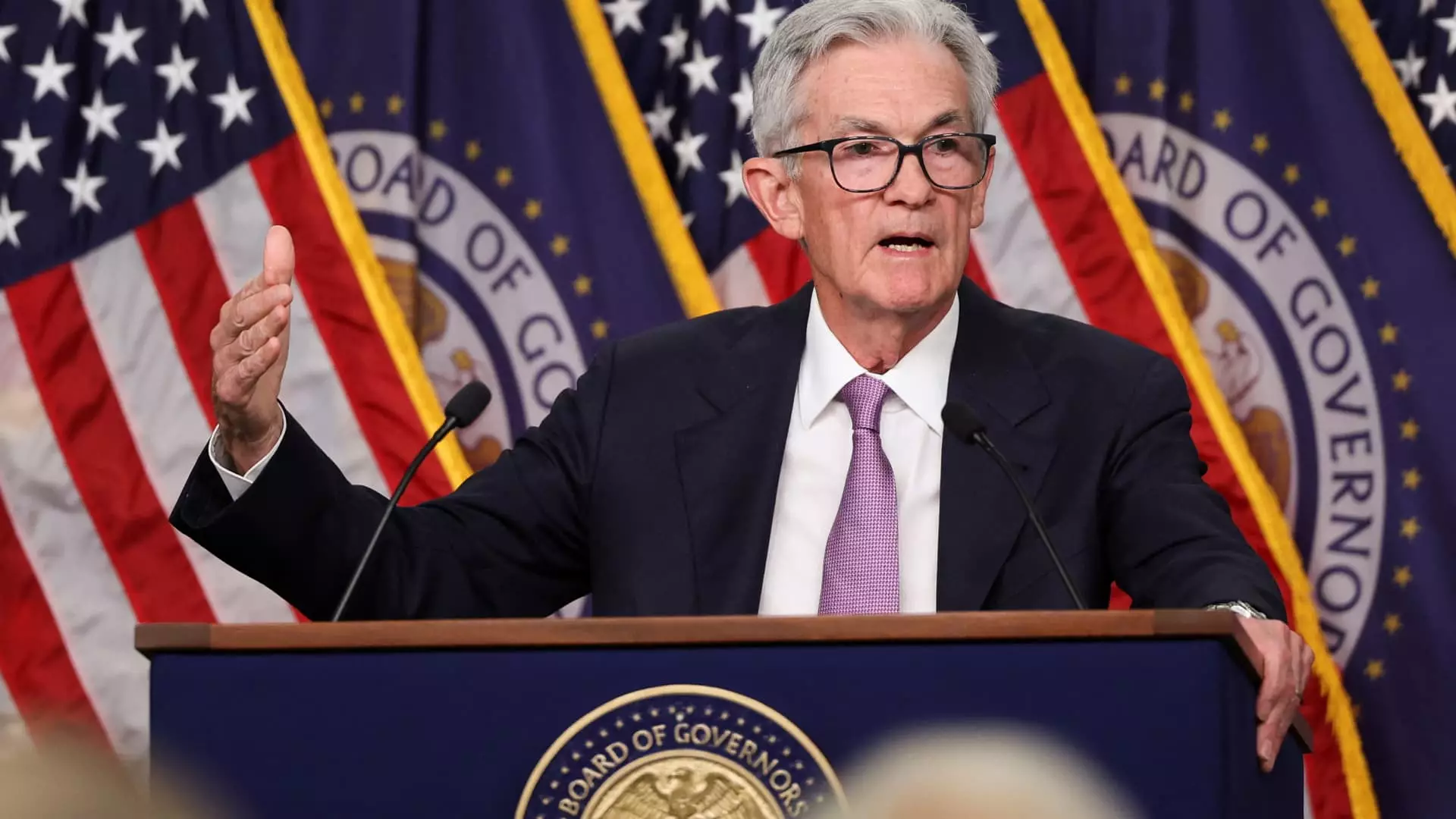The Federal Reserve’s recent decision to implement a second consecutive interest rate cut underscores an evolving monetary policy aimed at navigating complex economic dynamics. The central bank’s Federal Open Market Committee (FOMC) opted to reduce its benchmark borrowing rate by a quarter percentage point to a target range of 4.50%-4.75%. This decrease follows a substantial half percentage point reduction executed in September, shifting the Fed’s focus from aggressive tightening to a more calibrated approach that seeks to balance inflation control with support for employment.
This reduction, although widely anticipated by market analysts, signifies a subtle shift in the Fed’s assessment of current economic conditions. Importantly, the unanimous vote among Fed members, including previously dissenting Governor Michelle Bowman, reflects a consensus on the necessity of this policy direction. The Fed’s post-meeting statement indicated a nuanced view of the economic landscape, marking a departure from the language used in prior meetings, particularly regarding the interplay between labor market conditions and inflation.
In acknowledging the shifting economic realities, the FOMC noted, “conditions have generally eased, and the unemployment rate has moved up but remains low.” This assessment paints a picture of a labor market that, while resilient, is experiencing some signs of softening. The central bank recognizes that sustaining employment levels is an increasingly critical aspect of its mandate, particularly as it attempts to rein in inflation toward its 2% target.
The recognition of balanced risks to achieving both employment and inflation goals reveals a delicate juggling act within monetary policy. Federal Reserve Chair Jerome Powell’s emphasis on “recalibrating” policy suggests a strategic pivot away from the singular focus on inflation that characterized earlier policymaking. This tone aligns with a broader understanding that fostering stable employment is equally essential for long-term economic sustainability.
While the central bank’s metrics indicate that the economy has continued to expand at a “solid pace,” various indicators reveal potential hurdles ahead. The GDP growth rate of 2.8% in the third quarter, though above historical averages, fell short of expectations and hinted at a possible deceleration in economic momentum. Projections for the upcoming quarter suggest growth may further moderate to around 2.4%, as indicated by the Atlanta Fed’s preliminary assessments.
The labor market, while still robust, experienced a slowdown in job creation, with nonfarm payrolls rising by only 12,000 in October. Seasonal factors such as severe storm activity and labor strikes contributed to this slump, underlining the fragility of current employment trends. This backdrop compels the Fed to remain vigilant in its monitoring of economic signals while implementing policies that could mitigate adverse effects on job growth.
Adding another layer of complexity to the Fed’s decision-making is the recent political climate, highlighted by the election of President-elect Donald Trump. Market analysts anticipate potential challenges to inflation stemming from the incoming administration’s economic policies, which may include tariffs and immigration reforms. Historically, Trump’s economic measures during his first term resulted in stable inflation rates; however, the political discourse surrounding his approach could create uncertainty for ongoing monetary policy.
Powell has emphasized that the Fed will remain insular in its decisions, unaffected by political factors, at least for the immediate future. This sentiment indicates a commitment to independence in monetary policy-making, even as the market speculates about potential shifts prompted by new leadership.
As the Federal Reserve calibrates its approach to interest rates, market participants are keenly focused on the next steps. The consensus appears to be that further rate cuts are on the horizon, with new predictions suggesting the possibility of an additional quarter-point cut in December, followed by a pause in January as policymakers reassess economic conditions.
Traders, according to the CME Group’s FedWatch tool, foresee that this trend toward gradual cuts could continue, with a terminal rate projected around 2.9%. Such a strategic approach aims to strike a balance between fostering growth and controlling inflation without triggering a recession.
Ultimately, the Fed’s ability to execute a “soft landing”—managing inflationary pressures while ensuring robust economic growth—will be vital for the health of the U.S. economy. As policymakers navigate this intricate landscape, their success will hinge on their capacity to adapt to rapidly changing economic indicators and respond pragmatically to unfolding political scenarios. The outcomes of these decisions will undoubtedly shape the financial landscape and impact consumer behaviors going forward.

